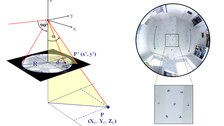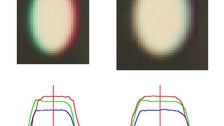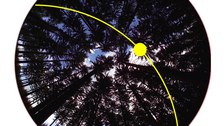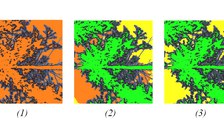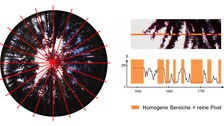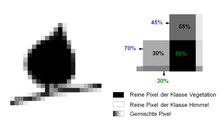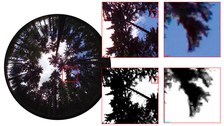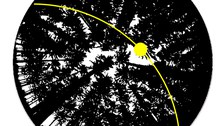Hemisphärische Photogrammetrie
Titel des Projekts
Verbesserung der Diagnostik von Waldökosystemen unter besonderer Berücksichtigung strahlungsökologischer Fragen in Verbindung mit digitaler hemisphärischer Photogrammetrie (DFG, abgeschlossen).
Förderung
Deutsche Forschungsgemeinschaft (DFG)
Motivation
Die hemisphärische Photographie ist ein etabliertes Instrumentarium zur Bewertung der Strahlungssituation in Waldbeständen. Sie hat einen deutlichen Vorteil gegenüber der Verwendung konventioneller Strahlungssensoren aufgrund der räumlich aufgelösten Erfassung der Kronenstruktur durch eine Momentaufnahme.
Zielstellung
Das Ziel des Projektes war die Ableitung geometrischer Informationen über die Struktur des Kronendaches aus Hemisphärenbildern zur Bestimmung photosynthetisch wirksamer Strahlungswerte. Daraus ergaben sich folgende Aufgaben:
- Modellierung der geometrischen Abbildungseigenschaften von Fisheye-Kamerasystemen
- Entwicklung eines Kalibrierverfahrens für zur Strahlungsbestimmung eingesetzte Kameras
- Entwicklung eines automatischen subpixelgenauen Segmentierungs- bzw. Klassifikationsverfahren zur Bestimmung strahlungsrelevanter Bereiche im Bild
Resultate
Geometrische Modellierung
Der funktionale Zusammenhang zwischen Objektpunkt und zugehörigem Bildpunkt wurde für verschiedene Fisheyemodelle formuliert und in eine Bündelblockausgleichung implementiert. Dies ermöglicht die Kalibrierung der Fisheye-Kamerasysteme mit Hilfe eines dazu eingerichteten Kalibrierraumes. Durch die Bestimmung individueller Verzeichnungsparameter für jeden Kanal des hemisphärischen Bildes können Effekte der chromatischen Aberration korrigiert werden. Es lässt sich ein genauer geometrischer Bezug zwischen dem Bild der Fisheye-Kamera und der Realität herstellen. In die hemisphärischen Kronendachbilder können nun der Stand der Sonne, meteorologische Parameter und Werte aus Strahlungsmodellen übertragen werden.

© IPF

© IPF

© IPF
Klassifikation von Kronendachbildern
Es wurde eine automatische Methode entwickelt mit welcher die Strahlungsdurchlässigkeit einzelner Pixel subpixelgenau quantifiziert werden kann. Sie basiert auf der Grauwertanalyse radialer Profile um reine Pixel von Mischpixeln zu trennen (1). Die Klassifikation der reinen Pixel erfolgt zweistufig. An eine globale grobe Klassifikation (2) schließt sich eine lokale Verfeinerung(3) an. Die Mischpixelklassifikation (4) erfolgt durch Skalierung des Grauwerts auf der Basis lokaler Referenzwerte bereits klassifizierter Pixel. Das Verfahren eignet sich für unterschiedliche Wetterbedingungen, unterschiedliche Arten von Waldbeständen und ist an die speziellen Eigenschaften hemisphärischer Bilder angepasst.

© IPF

© IPF

© IPF

© IPF

© IPF
RElevante Publikationen
ProjektPartner
Das Projekt wurde in Koorperation mit der Professur für Waldbau des Instituts für Waldbau und Forstschutz der Technischen Universität Dresden durchgeführt.
- Prof. Dr. habil. Sven Wagner
- M.Sc.Forestry Manuela Kenter
Kontakt
- Prof. Dr. habil. Hans-Gerd Maas (Projektleitung)
- Dr.-Ing. Ellen Schwalbe (Projektbearbeitung)

